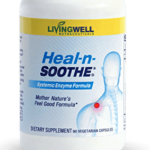
Is your back pain specialist really helping your back pain?
When you have serious back pain what do you do?
Do you seek the help of your medical doctor, physical therapist, or orthopedic specialist?
Do you opt for a massage, acupuncture, or the services of a chiropractor?
In each case, for both conventional and alternative medical approaches, you might get some form of back pain relief.
But each of these medical specialists often share the same weakness: if the therapy your healthcare provider offers doesn’t address the real underlying cause of your back pain you’ll likely remain in pain.
Besides not getting permanent back pain relief, there are other risks to watch out for too…
Health Professional #1: The Medical Doctor
A medical doctor may be your best chance of survival from trauma, but also may be the least effective source of help for back pain.
The reason is simple. Most family doctors will spend five minutes in the room asking you some questions about your symptoms, give you a brief examination, then treat you for the symptom of pain… but rarely dig deep enough to identify and treat the cause.
It’s the modern day equivalent of “take two aspirins and call me in the morning.” Only you get the joy of a doctor bill attached.
Your pain may go away for awhile with the prescribed anti-inflammatory pain pills. But your back pain didn’t start from a drug deficiency. Worse, prolonged use of NSAIDs can lead to many problems including:
- Increased probability of stomach ulcers
- Intestinal bleeding
- Liver and kidney damage
- Death (sure your back pain is gone, but this is still a problem right?)
Health Professional #2: The Orthopedic Specialist
If your back pain persists your medical doctor may refer you to an orthopedic specialist. This specialist will focus on structural issues such as vertebrae position and bulging discs.
He may recommend back surgery to remove a piece of the protruding disc. Sadly, he probably won’t look at what caused your disc to protrude in the first place or offer safer options for healing a herniated disc.
If you pass on surgery the orthopedic specialist may recommend cortisone injections. While cortisone shots do offer some back pain sufferers temporary relief, they also can lead to weakened tendons, deterioration of joint cartilage, and may even cause permanent damage.
Oh, and cortisone injections don’t cure the cause. They only cover the symptom. Noticing a pattern here?
Health Professional #3: The Physical Therapist
If you are referred to a physical therapist he will work hard to get you moving and get you strong.
A good physical therapist can be a real asset for recovering from back pain. But the therapy prescribed must be based on an understanding of the underlying cause as opposed to the pain symptoms alone.
If you go to a mediocre PT, you’re likely to receive the same treatment regimen anyone else with similar symptoms would be prescribed.
For example, if you have a herniated disc, he may simply give you the same exercises anyone else walking into the office with a herniated disc would receive. That’s simply not good enough.
Without an exercise program tailored to your particular dysfunction or muscle imbalance the success rate is largely hit or miss.
The physical therapist may use some additional tools for treating your pain such as:
- Heat to loosen muscles
- Ice to control inflammation
- Ultrasound to increase blood flow, and stimulate healing
- Electrical stimulation to strengthen weak muscles
All of these tools may help ease pain for a short time and even relax muscle spasms, but that’s as far as they’ll go. Temporary relief only.
Alternative Health Care #1: The Chiropractor
Tired of popping pills? Does the thought of going under the knife leave you feeling lightheaded?
Perhaps you decide to try a more natural back pain therapy by visiting a chiropractor instead.
A chiropractor will manipulate your spine and surrounding soft tissues to bring your body, particularly your spinal column, back into alignment. You may feel fast or even immediate relief if a spinal misalignment that is causing your back pain gets corrected.
But wait. You will need to continue returning to the chiropractor to have the spinal misalignment, called a subluxation, repeatedly adjusted — sometimes as frequently as every 48 hours. Otherwise the correction may not hold.
Why not? Simply because, as one of our customers once said it best, your bones only go where your muscles put them.
Focus on correcting the alignment of vertebrae, which are bones, without correcting the muscle imbalances that continue to pull your back out of alignment in the first place is a losing battle.
Alternative Health Care #2: The Acupuncturist
How about acupuncture, the ancient Chinese alternative therapy for pain relief?
Your acupuncturist will insert hair-thin sterile needles along meridian lines to restore your balance of energy flow.
Arguments continue to rage about exactly how acupuncture works, whether by stimulating the release of endorphins and circulation or by influencing the nerve impulses and electrical currents of the body. Or by removing energy blockages as claimed by traditional acupuncturists.
Regardless of which view is correct, acupuncture is a safe therapy that relieves back pain for many sufferers.
However, acupuncture has two important limitations:
- While acupuncture can help resolve the buildup of toxins in trigger point areas, it doesn’t address why the build-up occurred in the first place.
- Acupuncture’s impact on nerve-based back pain is limited. Treatments can improve the body’s ability to tolerate a higher level of pain temporarily, but isn’t a solution for moving vertebrae and muscles away from irritated nerves.
Alternative Health Care #3: The Massage Therapist
Massage therapy can be quite effective for reducing stress and relaxing muscles when performed by a well trained therapist.
A “deep massage” or “sports massage” can reduce or eliminate back pain, particularly back pain spasms caused by stress and tension. But it simply isn’t a therapy made for eliminating most causes of back pain.
The Right Approach
All of the back pain therapies provided by these specialists have their strengths and weaknesses. But the universal shortcoming is an ability to single-handedly resolve most or all underlying causes of back pain.
Now don’t get me wrong. Some of these therapies can be very helpful for back pain, particularly when combined with other approaches. If your current back pain therapy isn’t working, I suggest starting with these five simple tips for getting rid of your back pain:
- Identify the cause
- Treat both the cause and symptom
- Remain aware of what’s going on in your body
- Take consistent, focused action
- Stop doing what doesn’t work
For more specific advice, including an action plan tailored for your own back pain, be sure to ask for a free copy of my book, The 7-Day Back Pain Cure.
Click Here to Get Your Free Copy Today!



